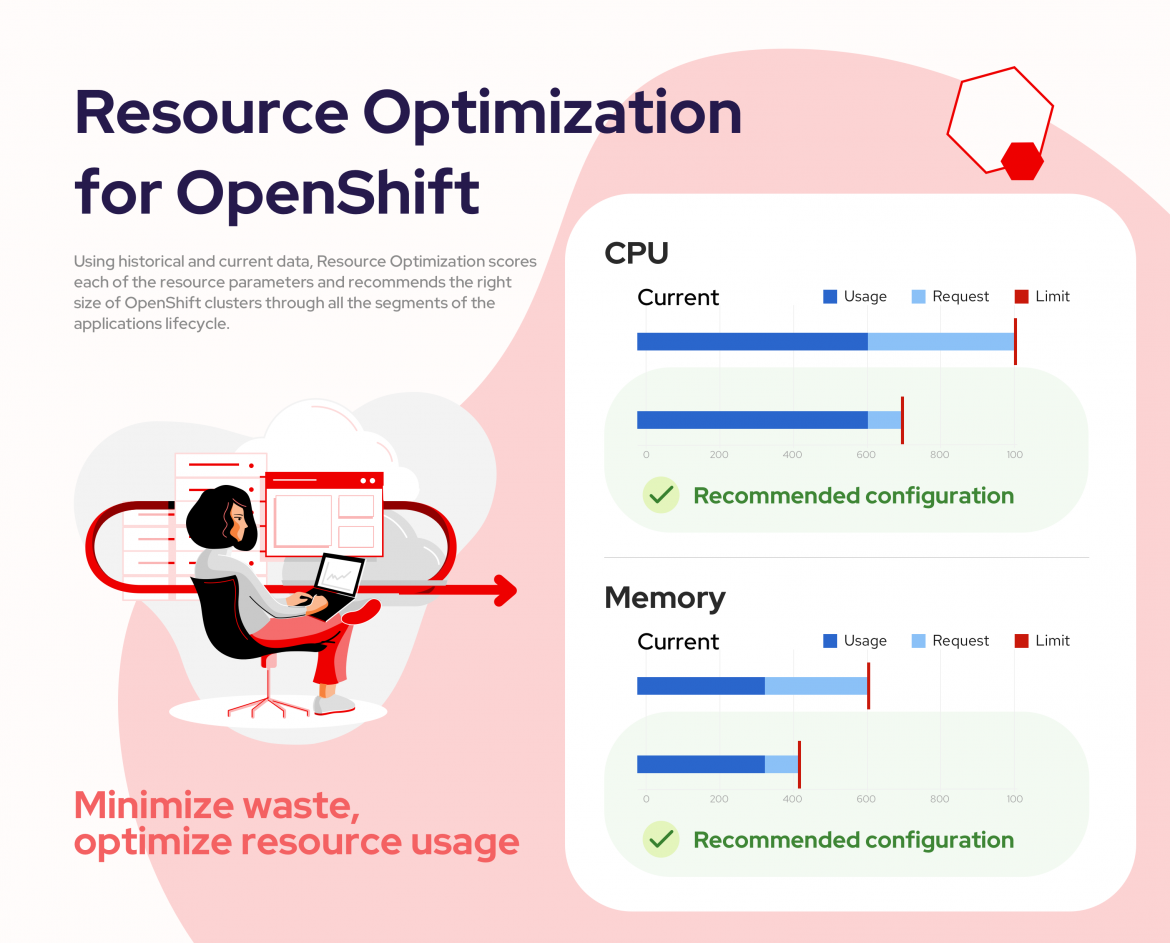As organizations expand cloud-native operations and introduce new platforms, the variable and scalable nature of Kubernetes can be highly beneficial to operations, but also challenging to manage. Decentralized information from varying, fragmented tools can be difficult to oversee, making it difficult to track spend across footprints. This insufficient cost monitoring can lead to overspending quickly, and can inhibit IT from realizing the full value of hybrid cloud and Kubernetes investments. Organizations are constantly challenged with doing more with less, whether it’s budget, talent or time. To fully maximize business value in economic uncertainty, new processes and tools are imperative to stay dynamic.
Red Hat Insights provides unified visibility across platforms and services, enabling teams to manage holistically. Red Hat OpenShift customers can use Insights for configuration assessment and vulnerability visibility, along with Cost Management for greater cost perspective and transparency. Cost Management for Kubernetes provides a measurement capability and showback to compare spend against allocated budgets. IT teams need cost visibility for clusters, projects, and applications across on-premise and public cloud environments to properly align business priorities with resources.
Now, Red Hat is integrating Cost Management with a new Resource Optimization feature to not only enable IT governance with cost reporting, but to also provide a better way for developers to maximize resources with recommendations. It enables perspective at the container level, so Red Hat OpenShift users can get the most out of their subscriptions.

Using historical and current data, Resource Optimization scores each of the resource parameters and recommends the right size of OpenShift clusters through all the segments of the applications lifecycle. It provides visibility into how much cloud resources actually cost, what’s not being used efficiently, and then recommends ways to optimize usage ⎯ this may mean cutting spend, but it may also mean increasing spend to help an application perform better. Guidance is specific and time-oriented, so developers know exactly what actions to take and when, based on data from up to 15 days.
Already available to Red Hat Enterprise Linux customers, expanding Resource Optimization to Red Hat OpenShift further optimizes resource consumption for organizations that use the Red Hat portfolio to innovate across the open hybrid cloud. For more information, check out the product documentation for Cost Management.
Resource Optimization for Red Hat OpenShift is available in limited preview for select customers. To access, toggle on “Preview” in console.redhat.com. If you are not a part of the initial group of users, you can request access by sharing feedback using “Feedback” on the right.
关于作者
Red Hat is the world’s leading provider of enterprise open source software solutions, using a community-powered approach to deliver reliable and high-performing Linux, hybrid cloud, container, and Kubernetes technologies.
Red Hat helps customers integrate new and existing IT applications, develop cloud-native applications, standardize on our industry-leading operating system, and automate, secure, and manage complex environments. Award-winning support, training, and consulting services make Red Hat a trusted adviser to the Fortune 500. As a strategic partner to cloud providers, system integrators, application vendors, customers, and open source communities, Red Hat can help organizations prepare for the digital future.
产品
工具
试用购买与出售
沟通
关于红帽
我们是世界领先的企业开源解决方案供应商,提供包括 Linux、云、容器和 Kubernetes。我们致力于提供经过安全强化的解决方案,从核心数据中心到网络边缘,让企业能够更轻松地跨平台和环境运营。

